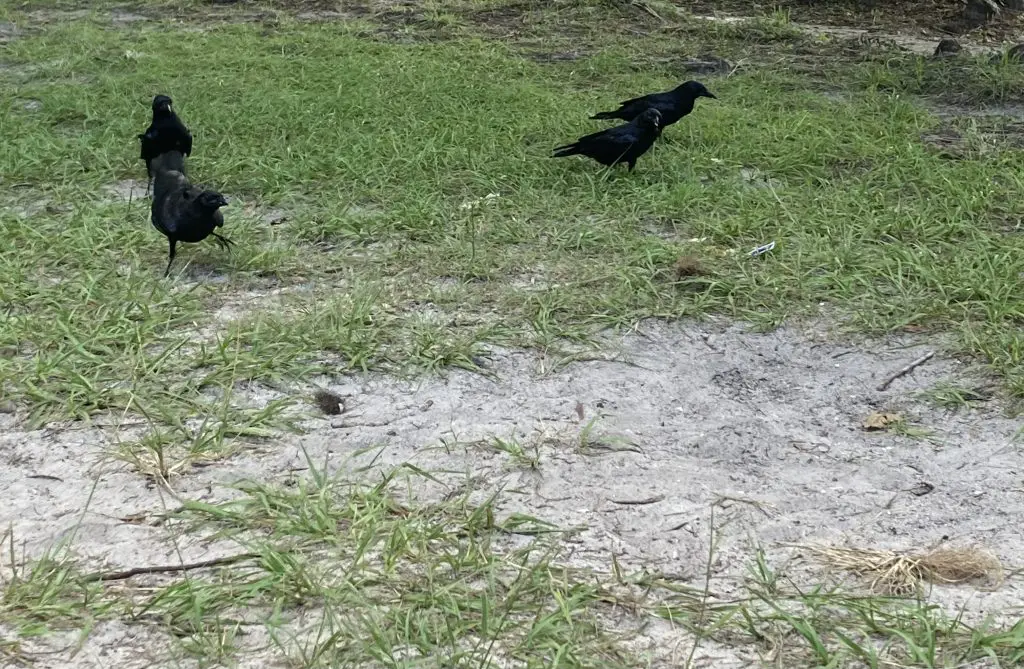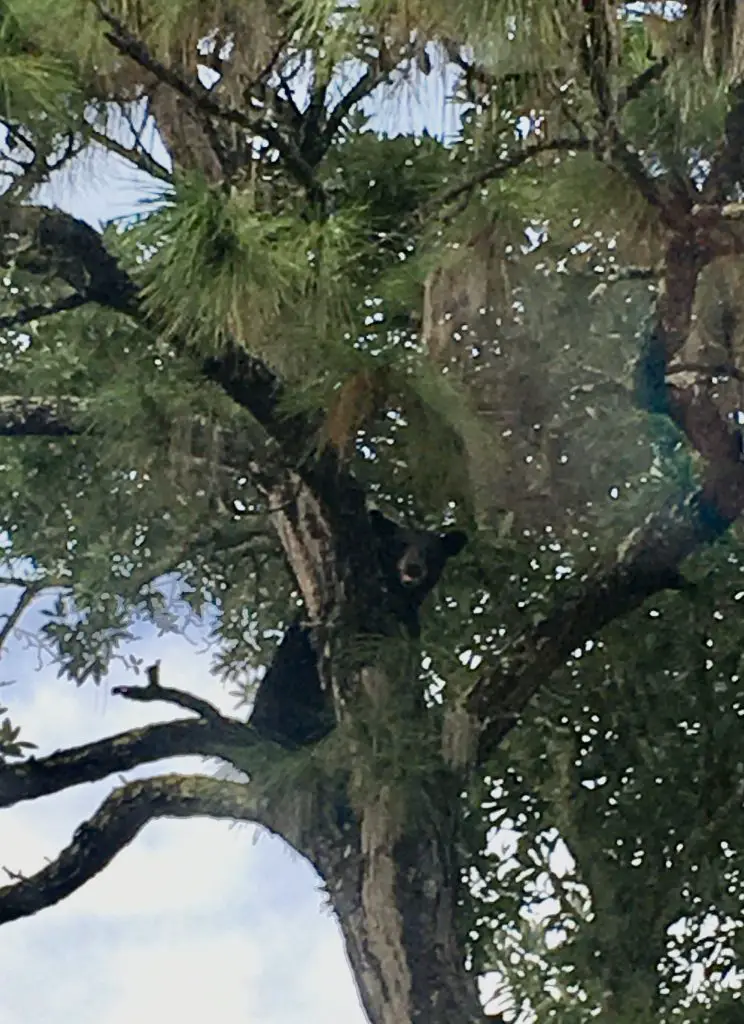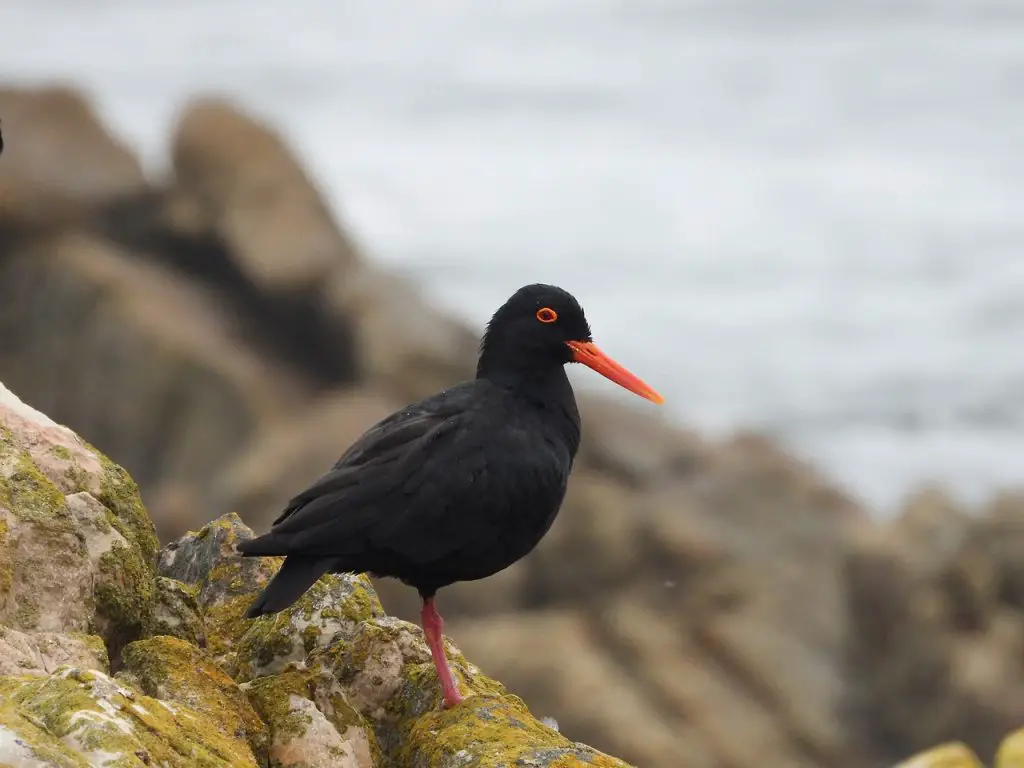Technically, black isn’t a color. It’s the absence of color. Since melanin (a pigment) doesn’t reflect light, we perceive the color black. Black animals have a big dose of melanin in their bodies to create their bold looks.
Let’s explore the beautiful black animals of the world.
Key Facts:
- I’ve included black animals that are black as adults, and some melanistic animals.
- Melanistic animals are individuals within a species that have more melanin than others.
What’s the Difference Between Black and Melanistic Animals?
Before we jump into our list of black animals, it’s worth pointing out the difference between black and melanistic animals. On the surface, you might assume that black and melanistic animals fall into the same category. While both types may appear visually black, their underlying mechanisms and occurrences vary.
Black animals typically have a uniform black coloration due to the presence of a specific gene that controls the production of melanin. This melanin, a dark pigment, gives their fur or skin its deep black hue. Examples of black animals include naturally occurring black cat breeds and certain dog breeds with predominantly black coats.
On the other hand, melanistic animals result from an increased production of melanin, leading to a darker appearance than their usual coloration. This occurrence is driven by a genetic mutation that triggers an overproduction of melanin. As a result, animals that are melanistic may have darker patches or an entirely black appearance that differs from their usual coat pattern. Melanistic variants are commonly observed in big cats like panthers, where their spots or stripes are masked by the excess melanin.
20 Black Animals: A Summary
Want a quick summary of 20 black animals? Check out the list below.
- Crow
- Raven
- American Black Bear
- Black slug
- Indigo Snake
- Short-finned Pilot Whale
- Black Panther
- Celebes Crested Macaque
- Friesian Horse
- Black Swan
- Black Widow Spider
- Lark Bunting
- Rat Snake
- Black Tree Monitor
- Gold Rim Swallowtail
- Cormorant
- Ayam Cemani Chicken
- Black Kingsnake
- Black Baza
- Glossy Ibis
- Black Oystercatcher
20 Black Animals: A Deeper Dive
Do you want to learn more about black animals? You are in the right place! I’ll share more details on these dark species below.
Crow

Crows (Corvus brachyrhynchos) are mysterious black birds with a dark reputation. So dark that a group of crows is called a murder!
Crows are incredibly adaptable birds, thriving in a diverse range of habitats, from dense forests and rural landscapes to urban areas and coastal regions. Their adaptability and intelligence have led them to succeed in human environments, making them a common sight in cities worldwide.
The birds are veritable smarty-pants with exceptional problem-solving skills and advanced cognitive abilities. They demonstrate complex reasoning, use tools to extract food, and even hold “funerals” to mourn their fallen.
American Black Bear

Black bears (Ursus americanus) are iconic creatures that hold a special place in the American wilderness. You can find them in most corners of America, I’ve seen them everywhere from my Floridian backyard to Alaska! Wherever you spot them, it’s a beautiful sight.
Black bears are incredibly versatile in their habitat preferences, adapting to a wide range of environments. They live in dense forests, mountainous regions, swamps, and even suburban areas. Their ability to thrive in diverse landscapes makes them one of the most widely distributed bear species in North America.
Although they are classified as omnivores, their diet can vary significantly depending on the season and available resources. They consume a wide range of food, including berries, nuts, insects, small mammals, and occasionally carrion. During the summer months, black bears often feast on vegetation and berries, while they enter a state of torpor during winter, relying on their fat reserves for survival.
Black Slug

The Black Slug, scientifically known as Arion ater, is a fascinating gastropod mollusk found in various habitats across Europe and parts of North America. As its name suggests, these slugs are characterized by their predominantly black coloration, which serves as a protective adaptation. The dark hue helps them blend into their surroundings, providing camouflage and reducing visibility to predators and potential threats.
Indigo Snake
The indigo snake (Drymarchon couperi) has lustrous, iridescent black-blue scales. It can grow to impressive lengths, often reaching up to 8 feet, making it one of the longest non-venomous snakes in the region.
Indigo snakes prefer a variety of habitats, including pine savannas, wetlands, and hardwood forests. They live in the southeastern United States and parts of Mexico. These powerful constrictors can also climb, often scaling trees in search of prey or safe places to rest.
Their diet mainly consists of other reptiles, particularly venomous snakes like rattlesnakes. Their immunity to certain venomous bites allows them to hunt and consume these dangerous prey items without fear of harm. This makes them an essential species in their ecosystems, as they help control the population of venomous snakes.
Short-finned Pilot Whale

The short-finned pilot whale (Globicephala macrorhynchus) is a marine mammal with a sleek black body and a distinct bulbous forehead. These whales have a robust build and can reach lengths of up to 20 feet, making them one of the larger members of the dolphin family. Despite the name “pilot whale,” they are actually a type of oceanic dolphin.
Short-finned pilot whales are highly social animals, often found in tightly-knit pods ranging from a few individuals to several hundred. They prefer deep offshore waters and are often sighted in temperate and tropical oceans worldwide. These deep divers are known for their impressive diving abilities, capable of reaching depths of over 1,000 meters in search of squid and deep-sea fish.
Notably, these whales have a tendency to strand en masse on beaches. Scientists speculate that strong social bonds within pods might be a contributing factor to this behavior, as they follow a distressed or ill leader. This phenomenon, known as mass stranding, highlights the complexity of their social structure and behavior.
Black Panther

Despite its name, the black panther is not a separate species but a color morph caused by a genetic mutation that results in an excess of melanin, darkening its fur. With its jet-black coat, this melanistic variant of the leopard or jaguar (Panthera pardus) possesses an aura of mystery and allure.
Raven

The raven (Corvus corax) is an intelligent black bird that has been steeped in myth and folklore for centuries. With its glossy black plumage and impressive size, often reaching up to two and a half feet in length, the raven commands attention wherever it soars. With a wedge-shaped tail and a thick beak, these birds are known for their distinct “cronk” calls that resonate through forests and open landscapes.
Ravens are highly adaptable birds, found in a variety of habitats, from dense woodlands and coastal cliffs to open fields and urban areas. Their ability to thrive in diverse environments has earned them a place in cultures worldwide, symbolizing both wisdom and cunning.
Interestingly, a group of ravens is called an unkindness. I think that’s a rather unkind descriptor for these playful birds with exceptional problem-solving abilities.
Celebes Crested Macaque

Scientifically known as Macaca nigra, the Celebes crested macaque is a captivating black monkey endemic to the island of Sulawesi, Indonesia. With a striking contrast between its sleek black fur and a prominent crest of long, wispy hair on its head, this primate exudes a unique and alluring charm. Adult males can weigh up to 20 kilograms, while females are slightly smaller, making them one of the largest arboreal monkeys.
These monkeys have a complex social structure. They live in multi-male, multi-female groups, where strong bonds and intricate communication play a pivotal role in maintaining harmony within the troop. Additionally, they can use tools, such as using leaves to clean food before consumption—a behavior considered rare among non-human primates.
Friesian Horse

The Friesian horse is an enchanting black equine breed celebrated for its striking appearance and regal demeanor. With a glossy black coat, flowing mane, and feathered legs, these horses exude elegance and charm. They have a sturdy build, typically standing between 14.3 to 17 hands high, making them a majestic presence.
Friesian horses originally hail from the Friesland region of the Netherlands, and their history can be traced back to medieval times. A long, luxurious mane and feathering on their legs adds to their distinctive appearance.
Black Swan

The black swan (Cygnus atratus) is a waterfowl species renowned for its elegant black plumage and striking red bill. Unlike its white-feathered counterparts, this swan’s sleek black coloring creates a dramatic contrast against its surroundings, making it a mesmerizing sight. Adult black swans can measure up to 4.5 feet in length, with long, slender necks that add to their graceful appearance.
Black swans are native to Australia and are typically found in a variety of aquatic habitats, including lakes, rivers, and coastal wetlands. They can also live in human-modified environments.
The birds are monogamous. They form strong bonds with their mates, often remaining together throughout their lives. Additionally, they display graceful synchronized swimming and elaborate courtship rituals, where they elegantly glide and bob across the water in a beautiful ballet-like performance.
Black Widow Spider

The black widow spider (Latrodectus mactans) is a notorious arachnid feared for its potent venom and distinctive appearance. With its glossy black body and a red or orange hourglass-shaped marking on its abdomen, this spider’s striking coloration serves as a warning of its potential danger.
Their venom contains neurotoxins that can cause severe symptoms in humans, particularly for young children, the elderly, or those with compromised immune systems. Despite their reputation, black widow spiders typically only bite when threatened or provoked, preferring to save their venom for subduing prey.
Lark Bunting
The lark bunting (Calamospiza melanocorys) is a songbird with a distinctive black plumage and contrasting white wing patches. Male lark buntings display striking breeding plumage, featuring jet-black bodies with a white wing patch and a snowy white belly. In contrast, females and non-breeding males boast a more subdued appearance, showcasing a brownish-gray coloration.
Lark buntings are native to the prairies and grasslands of North America, particularly the central and western regions of the United States. They have a preference for open spaces, including grassy meadows, plains, and agricultural fields, where they forage for seeds and insects.
Black Rat Snake

The rat snake (Elaphe obsolete) is a non-venomous serpent found in a wide range of habitats across North America. These snakes exhibit considerable variation in color and pattern, but many individuals have a glossy black or dark brown appearance with lighter, sometimes reddish, scales down their backs. As predators, these snakes have sharp teeth and a keen sense of smell to locate and capture their prey, which primarily includes rodents and small birds.
When threatened, rat snakes may coil, vibrate their tails, and hiss loudly, creating a remarkable resemblance to the more dangerous venomous snakes. This mimicry often deters potential predators, providing a protective advantage.
Black Tree Monitor
The Black Tree Monitor (Varanus beccarii) is a reptile with striking black coloration and exceptional climbing abilities. This monitor lizard species boasts a sleek black body with contrasting yellow markings, making it an exquisite sight amidst the lush greenery of its natural habitat. Adults can reach lengths of up to 3.5 feet, with long, prehensile tails that aid in balance while navigating treetops.
These critters lead an arboreal lifestyle. Their slender bodies, long claws, and specialized toe pads grant them the ability to move with ease through the dense foliage, seeking both shelter and prey in the treetops.
Gold Rim Swallowtail

The Gold Rim Swallowtail (Battus polydamas lucayus) is a beautiful butterfly species. It’s primarily black, with a line of yellow on the edge of its wings. It’s one of two swallowtail in this genus that live in the United States.
Cormorant

The great cormorant (Phalacrocorax carbo) is an aquatic bird with a striking blue-black plumage. With a long neck, streamlined body, and webbed feet, cormorants are well-adapted to their aquatic lifestyle. Their eyes have adapted to enhance underwater vision, aiding them in spotting and capturing their prey beneath the water’s surface.
Cormorants live in various water habitats, including coastal regions, lakes, rivers, and estuaries. As skilled divers, they use their strong wings to propel themselves underwater in search of fish and other aquatic creatures. After fishing, cormorants can often be seen perched on rocks or branches, with their wings outstretched to dry in the sun.
For centuries, these birds have been trained by fishermen in certain cultures to assist in catching fish. Cormorant fishing is a traditional technique that continues in some parts of the world, highlighting the bond between humans and these intelligent birds.
Red-Winged Blackbird

The red-winged blackbird (Agelaius phoeniceus) is a songbird that stands out with its striking combination of black plumage and vibrant red and yellow shoulder patches. Adult males boast glossy black feathers with bright red patches bordered by yellow bars on their wings, creating a captivating display during courtship and territorial defense. Females and juveniles have a more understated appearance, with streaked brown and white plumage.
The birds display remarkable singing prowess. Males are highly vocal and known for their complex songs, which include a mix of gurgles, whistles, and trills. These songs are essential for claiming territories and attracting mates during the breeding season.
Black Kingsnake
The black kingsnake (Lampropeltis nigra) is a reptile with glossy black scales and striking white or cream-colored bands. These bands adorn its body in a striking pattern, creating a beautiful contrast against the deep black background. Black kingsnakes are non-venomous constrictors, with a slender build that allows them to be agile and adept predators.
Black Baza
The black baza (Aviceda leuphotes) is a striking bird of prey that stands out with its glossy black plumage and contrasting blue-grey cere and legs. Adult black bazas display a sleek and slender appearance, with a wingspan of approximately 75-80 centimeters. Their tails are long and deeply forked, enhancing their graceful flight in the open skies.
Glossy Ibis

Glossy ibis (Plegadis falcinellus) are waterbirds distinguished by their striking blue-black plumage with iridescent hues that shimmer in the sunlight. Adults have long, curved bills, and during breeding season, they display rich maroon feathers on their heads, necks, and chests, adding to their allure.
Glossy ibises can live in a wide range of wetland habitats, including marshes, swamps, and shallow lakes. As wading birds, they probe the mud with their bills to find crustaceans, small fish, insects, and other aquatic prey. Their elegant, slow movements and graceful foraging techniques make them a delight to observe in these serene aquatic environments.
Black Oystercatcher

The black oystercatcher (Haematopus bachmani) lives along the coastal regions of North America’s Pacific coast. With its predominantly black plumage, bright orange-red bill, and distinctive pink legs, this oystercatcher stands out amidst the rugged rocky shorelines it calls home. Adult black oystercatchers measure about 40-46 centimeters in length, showcasing a sturdy build and a wingspan of approximately 76-80 centimeters.
The birds form lifelong monogamous bonds. These birds form pair bonds that can last for many years, and they work collaboratively to defend their territory and raise their chicks. Their elaborate courtship displays and intricate vocalizations contribute to the strong bonds they forge with their mates.
Final Take on Black Animals
Black animals are a beautiful sight to behold. As you seek out these wonderful creatures in the wild, be sure to give them the space they deserve.

